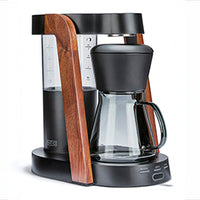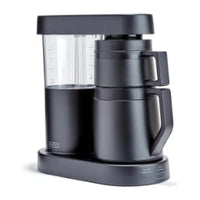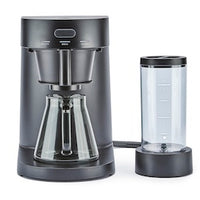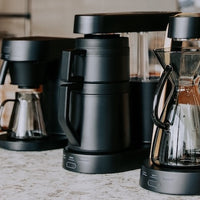Brewing in a Rush? You’re Sacrificing Flavor Every Time
Key Takeaways
-
Rushing the brewing process leads to uneven extraction, bitterness, or flat flavors
-
Skipping steps like grind calibration or water temperature control affects taste significantly
-
Pre-warming your carafe and allowing bloom time are essential for a balanced cup
-
Automated brewers can help with consistency, but speed shouldn’t override technique
-
Slowing down enhances both flavor and the ritual of coffee-making
The morning scramble is real — alarms, deadlines, commutes — and it’s tempting to speed through your coffee routine just to get something hot in your cup. But if you’re consistently brewing in a rush, you’re consistently leaving flavor on the table.
The irony? Brewing a great cup of coffee doesn’t require a ton of time — but it does require attention to a few non-negotiables. Cut corners, and your coffee will let you know.
Here’s how rushing affects your brew — and what to do instead, even when you're short on time.
The Most Common Corners Cut (and Why They Matter)
When you’re in a hurry, it’s easy to skip steps like weighing your grounds, letting the coffee bloom, or heating your water to the right temperature. But every one of these has a direct impact on flavor.
What usually gets skipped:
-
Measuring coffee and water accurately
-
Using the correct grind for your brew method
-
Letting coffee bloom before continuing the pour
-
Monitoring water temperature (195–205°F is ideal)
Missing these steps leads to under- or over-extraction, flat taste, or unpleasant bitterness. Speed doesn’t just shave time — it strips quality.
How Rushing Impacts Extraction
Extraction is the name of the game when it comes to flavor. Rush it, and you lose balance.
-
Under-extracted coffee (rushed pour, too coarse grind): sour, weak, or hollow
-
Over-extracted coffee (too hot, steeped too long): bitter, drying, unpleasant
Fast pours and skipped bloom stages often lead to uneven extraction — where some grounds brew correctly, but others are under- or overdone. The result is a muddled, inconsistent flavor.
Why the Bloom Stage Isn’t Optional
Even a 30-second pause makes a difference. When hot water first hits freshly ground coffee, carbon dioxide escapes — this is the bloom.
Skipping it means the gas interferes with water’s ability to extract the flavors evenly. Instead of soaking into the grounds, the water just rushes through them. Your cup ends up tasting off — sometimes hollow, sometimes harsh.
Make it a habit to pour just enough water to wet the grounds, wait 30–45 seconds, then continue brewing.
Temperature: The Silent Flavor Shaper
Speed often sacrifices water temperature. Using water that’s too cool results in an underwhelming brew; too hot, and you scorch the grounds.
Ideal water range: 195°F to 205°F
If you’re heating water without a thermometer, wait 30 seconds after boiling. For electric kettles with temperature control, lock it in.
Even if you’re pressed for time, hitting the right temp takes less than a minute — and pays off with a better cup.
Shortcuts That Don’t Ruin Your Brew
There are efficient ways to brew without hurting quality — it’s about choosing the right shortcuts.
Smart substitutions:
-
Use a scale once, memorize the scoop equivalent for your dose
-
Use an electric grinder with timer settings for consistent grind every time
-
Invest in a gooseneck kettle with temp control for speed + accuracy
-
Batch grind beans for 2–3 days at a time to save minutes without sacrificing freshness
And if you regularly brew during busy mornings, consider tools that support a repeatable, measured routine.

Slowing Down Isn’t Just About Taste — It’s a Ritual
Great coffee isn’t just about taste — it’s about presence. Slowing down for a minute to do it right sets the tone for your day.
Take a deep breath while your coffee blooms. Smell the aroma as it brews. Notice the quiet pause between steps.
The process becomes a moment — not just a means to caffeine.
Ratio Coffee and the Benefit of Precision
Brewers like those from Ratio Coffee are designed to automate precision without sacrificing craft. From controlled bloom to proper water temperature, the machines handle the fine points — so even on busy mornings, you’re not compromising flavor.
A well-designed brewer doesn’t rush, even if you do. It creates consistency that frees you from manual steps without watering down the experience.
The Best Cup Is Worth the Extra Minute
You don’t need 10 minutes and a full barista setup to make a better cup. You just need to value the process enough to stop rushing through it.
Coffee rewards patience. And the small rituals — from the bloom to the pour — are where quality lives.
So next time you're tempted to skip a step or speed things up, remember: your coffee knows. And it tastes better when you take your time.
Frequently Asked Questions
How long should I let coffee bloom?
Typically 30 to 45 seconds is enough to let CO2 release and prep the grounds for even extraction.
Is it okay to use pre-ground coffee to save time?
It saves time, but flavor quality drops. Pre-ground coffee loses freshness quickly. Grind fresh if possible.
What’s the fastest way to improve rushed brews?
Nail your water temperature and grind size. These two have the biggest flavor impact with minimal extra time.
Do automatic coffee makers brew too fast?
Some do. But high-quality brewers like Ratio Coffee are engineered to balance time and precision.
Can I skip weighing and just use scoops?
You can — just calibrate your scoop once with a scale so your measurements stay consistent.
 Ratio Eight S2
Ratio Eight S2
 Ratio Eight Original
Ratio Eight Original
 Ratio Six
Ratio Six
 Ratio Four
Ratio Four
 Compare Machines
Compare Machines






